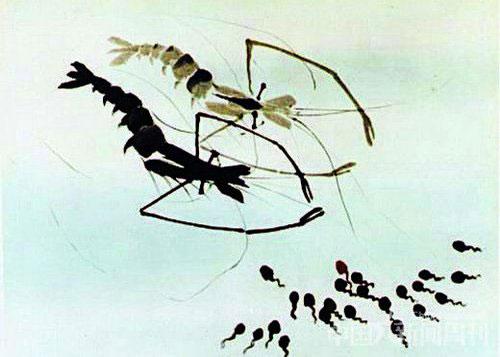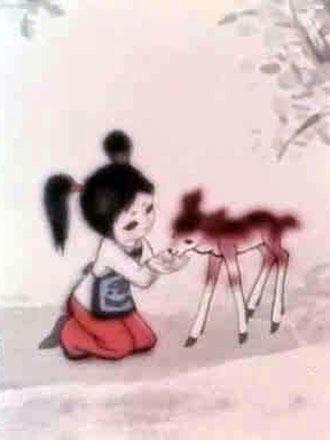| Videos | • Latest |
|
• Feature | • Sports | • Your Videos |
Is there a future for water-ink animation?

 0 Comment(s)
0 Comment(s) Print
Print E-mail CNTV, March 20, 2012
E-mail CNTV, March 20, 2012
The ongoing exhibition on the development of China's comics and animation industry shows a lot of animation works from recent years. But few of them have made much of an impact on the international stage. Instead, water-ink animation films made in 1960s and 70s are still regarded as the high-water mark of Chinese animation. Why doesn't modern animation measure up to these old classics?
 |
|
Still of "Little Tadpole Looks for Mamma" |
China may be producing more animation than ever before, but people still look back to the old water-ink films as a golden age.
"Little Tadpole Looks for Mamma" was China's first water-ink animation. Its inspiration came from the fish and shrimp figures drawn by the legendary painter Qi Baishi. The movie won a lot of international awards and the period saw a number of classics including Cricket Fighting by Ji Gong and Fishing Child. But high quality didn't come with high quantity, and the output was low back in those years.
Cai Zhijun, executive deputy secretary-genreal of China Animation Assoc., said, "The yearly output of animation films in those years was about 10 or 20 minutes, and audiences had few choices. But in recent years, the yearly output has exceeded two million minutes."
It takes one to two years to produce a water-ink movie. These complicated and time-consuming production techniques were gradually abandoned by the modern animation industry, as higher profits became top priority.
Cai Zhijun said, "Some animations may be great works, but they can't be further developed. For an animation film, screening the picture is not enough. The derivative products are more important."
|
|
|
Still of water-ink animation film |
The film itself accounts for only one third of the total profits from an animated production. Derived products make up a much larger part. Advanced technology reduced the cost and time of the animation process, and this meant the end of water-ink animation films. But as far as many animation fans are concerned, water-ink is still the high point of Chinese animation. If this level of artistic quality could be made commercially viable, it could mark the beginning of a new chapter in the industry's development.







Go to Forum >>0 Comment(s)